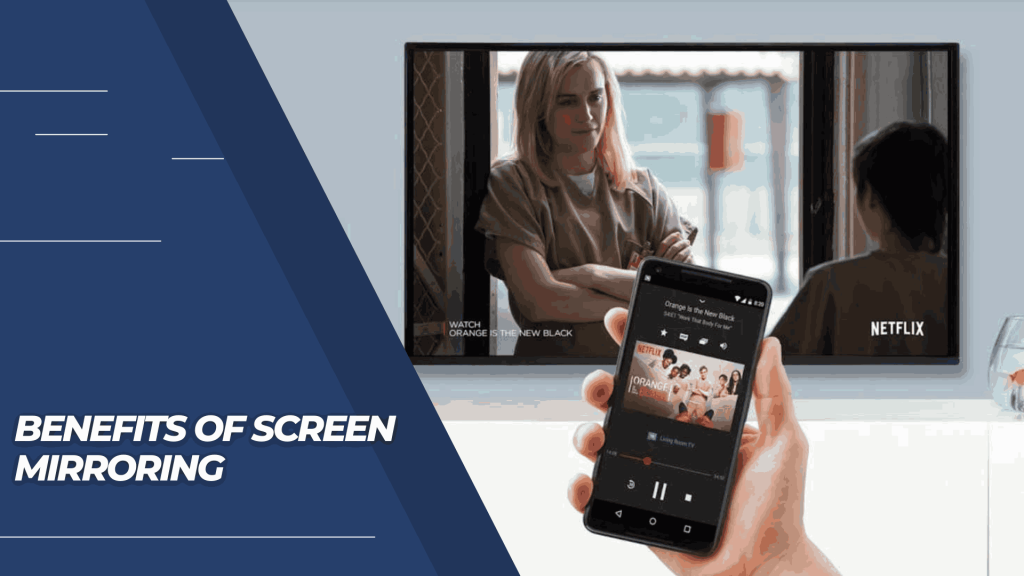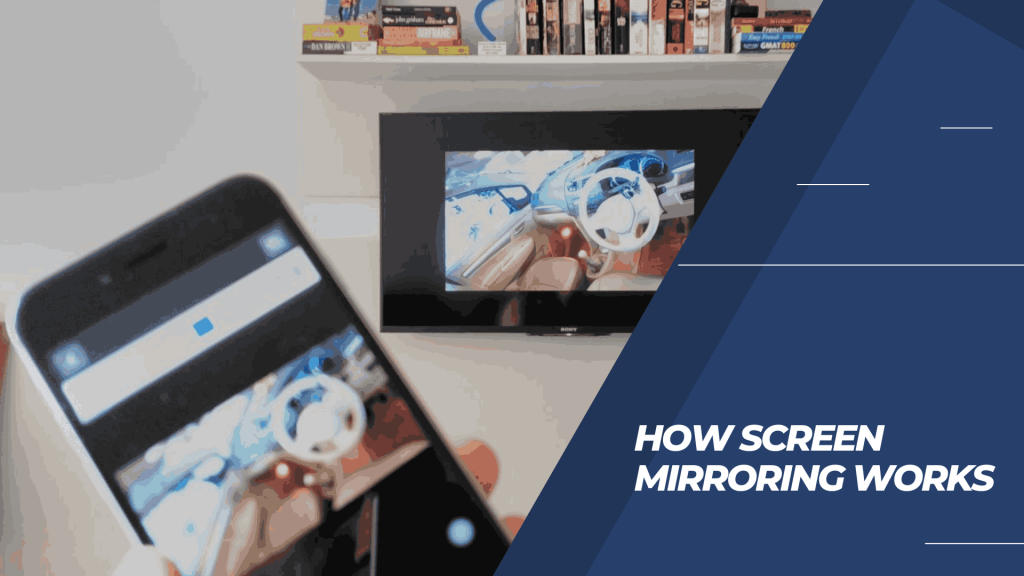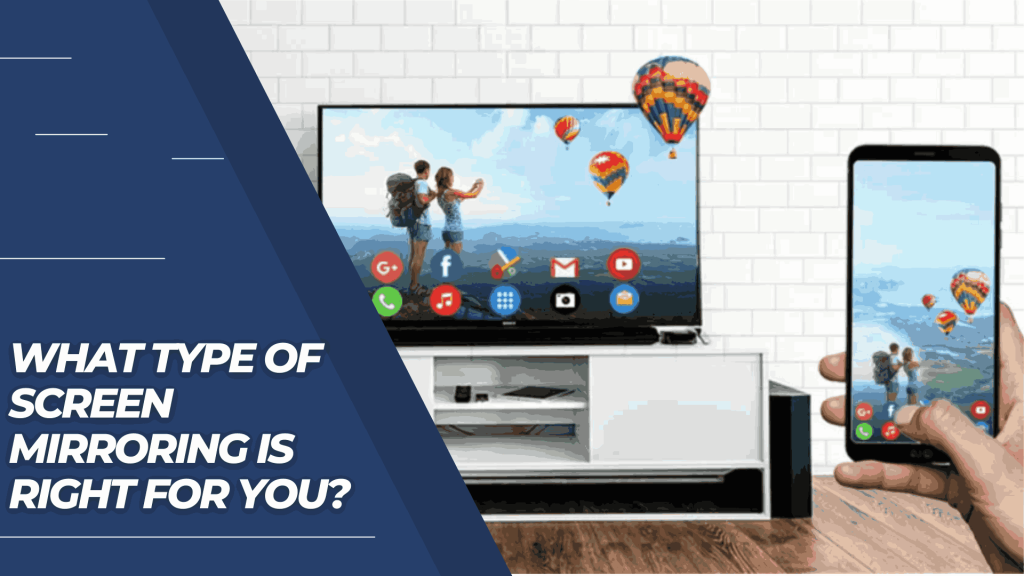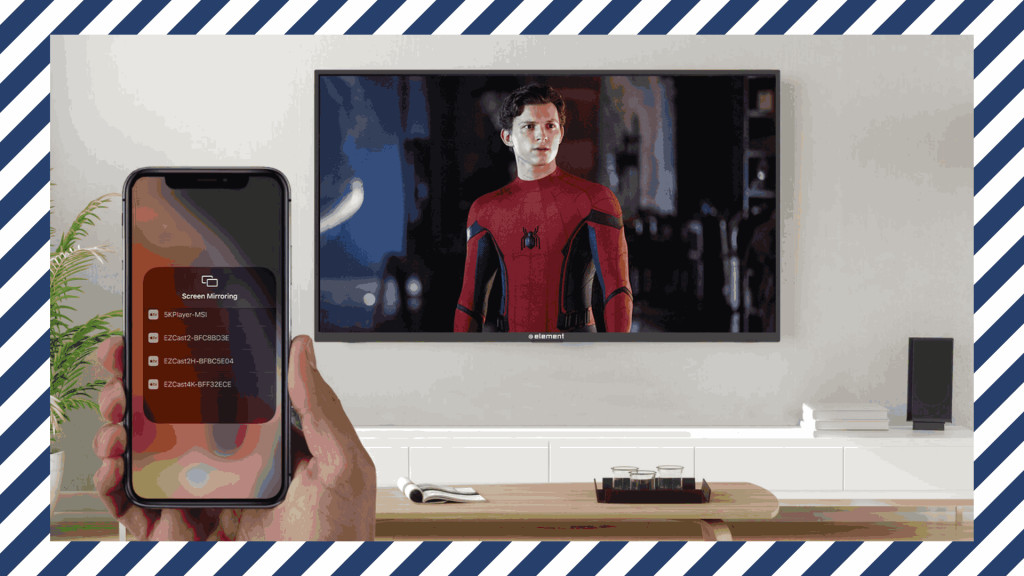If you have an Android or iOS device, there’s a good chance that you have mirrored your device at some point. Screen mirroring is duplicating what’s on your device’s screen on another display, be it a monitor, projector, or phone!
Though screen mirroring is simple enough, there are a few things to remember if you want to do it correctly. In this article, we’ll look at the benefits of screen mirroring and show you how to do it on Android and iOS!

Benefits of Screen Mirroring
There are many benefits to screen mirroring, which can be put to good use in a variety of settings.

Here are five key advantages of screen mirroring:
1. Increased Collaboration. Screen mirroring can increase collaboration between team members by allowing them to view and work on the same document or project simultaneously. This is especially useful when multiple team members are located in different locations.
2. Improved Communication. Because everyone can see the same screen, communication is improved, making it easier to get everyone on the same page. This can be especially helpful when there is a lot of discussion and disagreement about a particular issue.
3. Reduced Time Wasted. Screen mirroring can help you save time by allowing you to work on your projects offline and then sync them back up later when you have more bandwidth or connectivity available. This is especially helpful if you work from home or have limited Wi-Fi access at your office.
4. Increased Productivity. Screen mirroring can increase productivity by allowing you to work uninterrupted for long periods. This is especially beneficial if you have a lot of tedious tasks that you need to complete but don’t have time for them in one sitting.
How Screen Mirroring Works
Screen mirroring is a great way to share your monitor’s display on a larger screen. When you mirror your monitor, everything on the smaller screen is also shown on the larger one. So if you are working on a document on your laptop, you can see it on the big screen in your office. Screen mirroring works with most laptops and most monitors.

The main advantage of screen mirroring is that you can use it to work on projects or documents in different places without having to carry multiple devices with you. You can also use it to show family and friends what you are working on without having to worry about them disturbing you. Screen mirroring is also an excellent way to collaborative work by allowing multiple people to work on the same document or project at the same time.
Screen mirroring has some limitations, mainly that it depends on the connection between the laptop and monitor. Sometimes the connection is poor or unavailable, so screen mirroring may not work well. Another limitation is that some applications do not support mirroring, so be sure to check before you start using it.
What Type of Screen Mirroring is Right for You?
When you’re looking to improve your productivity, screen mirroring can be a great way to do it. If you have a computer or phone that you can connect to an HDTV, then there are several different types of screen mirroring that you can use.

Here are the advantages of each:
Computer Screen Mirroring
This is the most common type of screen mirroring, and it allows you to view what is on your computer screen on the big screen. This is great when you want to work on a project and need to see what you’re working on in detail.
This is the most common type of screen mirroring, allowing you to view what is on your computer screen on the big screen. This is great when you want to work on a project and need to see what you’re working on in detail. Phone Screen Mirroring: With phone screen mirroring, you can also view what is on your phone’s screen on the big screen. This can be helpful when you want to watch a movie or show while sitting in another room.
Phone Screen Mirroring
With phone screen mirroring, you can also view what is on your phone’s screen on the big screen. This can be helpful when you want to watch a movie or show while sitting in another room. Tablet Screen Mirroring: Tablets can also be screen mirrored, so you can use them as a second screen to help you work on projects. This is especially helpful if you have multiple devices that you need to use at the same time.
Tablets can also be screen mirrored, so you can use them as a second screen to help you work on projects. This is especially helpful if you have multiple devices that you need to use at the same time. Smartphone Screen Mirroring: If you only have a smartphone, then mirroring it to your TV may be the best option. This will allow you to use your phone as a full-sized computer monitor.
Several types of screen mirroring are available, and which is best for you will depend on your needs. Some people prefer computer screen mirroring because it allows them to see what they’re working on in detail, while others prefer phone screen mirroring because it lets them watch movies or shows while sitting in another room. There are also different types of tablet mirroring available, depending on what kind of device you have. And last
How to Set Up Screen Mirroring across various devices
Screen mirroring is a great way to share your screen with other devices. You can set it up on your phone, laptop, or television.

Here are the advantages of screen mirroring:
| 1. | You can share your screen with other people in the room. |
| 2. | It is easy to set up and use. |
| 3. | It is a great way to work on projects with others. |
| 4. | Screen mirroring is a great way to watch movies or television shows. |
| 5. | You can use it to play games or use applications. |
FAQs
Screen mirroring is a great way to easily and quickly share content with others. It’s also great to show off your work or projects to friends and family. Screen mirroring can be an excellent tool for business owners and employees, who can use it to show clients or customers what they’re working on.
Screen mirroring is easy to set up. You’re ready to go by simply connecting your devices using an HDMI cable. Some devices, like laptops and desktop computers, have screen mirroring built-in. Other devices, like smartphones and tablets, require a separate app or service to screen mirror.
There are some minor disadvantages of screen mirroring. For example, if one device has a better connection, the weaker device might become blurry or pixelated when the other device displays its content. Additionally, if one device is larger than the other, it might not be able to show all of the content from the smaller device.
You can do a few things to maximize the benefits of screen mirroring. For example, ensure your devices are connected to the same network and have an equal amount of bandwidth available. Additionally, use a high-quality HDMI cable to provide the best possible viewing experience.
Conclusion
Screen mirroring is a great way to share your monitor’s display on a larger screen. When you mirror your monitor, everything on the smaller screen is also shown on the larger one. So if you are working on a document on your laptop, you can see it on the big screen in your office. Screen mirroring works with most laptops and most monitors.